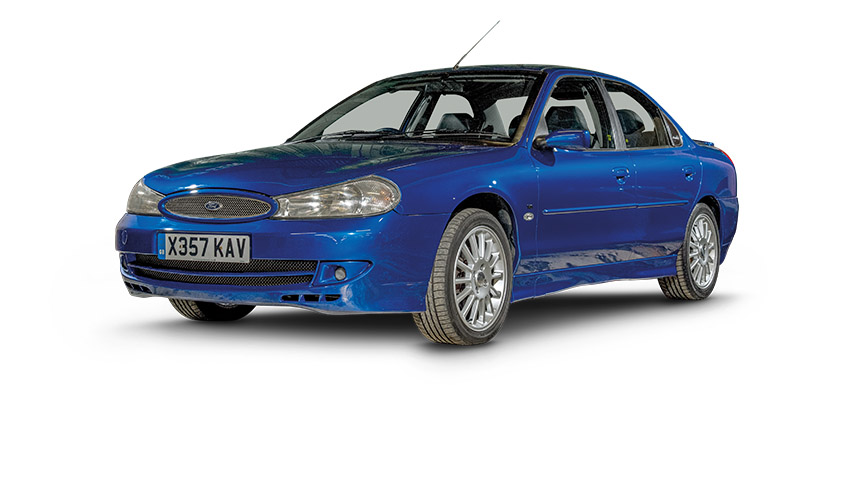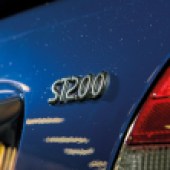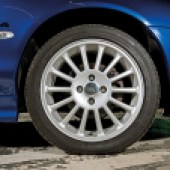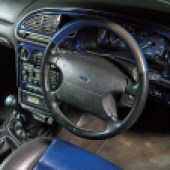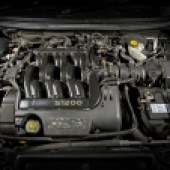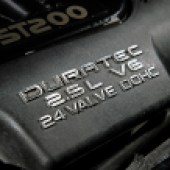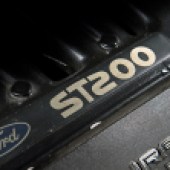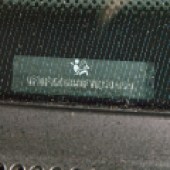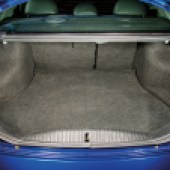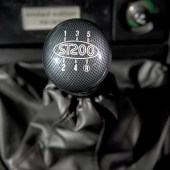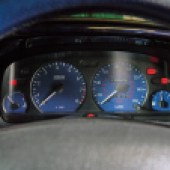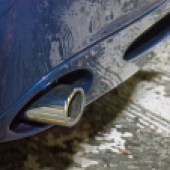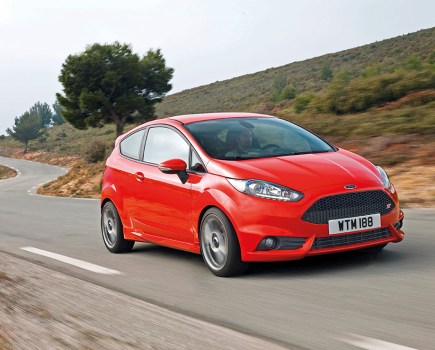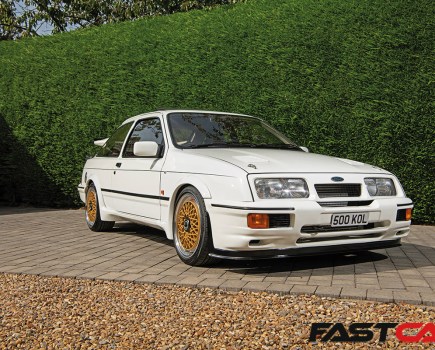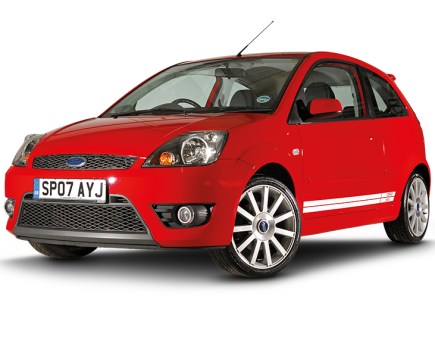Hero of the BTCC’s golden age but bizarrely overlooked today, the motorsport-inspired Ford Mondeo ST200 is a fast, faithful and extremely affordable family favourite. Here’s what you need to know before buying one.
Guide from Fast Ford magazine. Words: Dan Williamson. Photos: Matt Richardson.
Ford Mondeo ST200 History
23 November 1992 – Ford Mondeo production begins at Genk, Belgium.
March 1993 – Ford Mondeo is launched at the Geneva Motor Show.
August 1996 – Facelifted Ford Mondeo introduced, now known as Mk2, with ‘Dame Edna’ headlamps and bigger back lights.
September 1996 – Mondeo ST24 (Sports Touring 24-valve) appears as a repackaged Si V6 saloon, featuring 168bhp, 2544cc Duratec V6 engine, lowered suspension and uprated dampers.
April 1997 – Mondeo ST24 hatchback introduced, wearing four-spoke ‘turbine’ 16in alloy wheels and RSAP (Rallye Sport Appearance Pack) bodykit comprising spoilers, skirts and mesh grilles.
February 1998 – Mondeo ST24 estate joins the range, with RSAP bodykit offered at extra cost.
Autumn 1998 – RSAP standard on ST24 unless delete option is specified.
24 October 1998 – Mondeo ST200 previewed at the British International Motor Show, intended to monetise Ford’s British Touring Car Championship programme. Based on the ST24 hatchback or estate, the ST200 ((Sports Touring 200bhp) is tuned to produce 201bhp, boasts uprated suspension, 17in alloys, Recaro seats and almost-mandatory Ford Racing Blue (Imperial Blue) paint.
8 February 1999 – First production Mondeo ST200 built, a right-hand-drive in Racing Blue.
9 March 1999 – Ford promotes the Mondeo ST250 Eco concept at the Geneva show. Closely resembling the ST200, the ST250 (Sports Touring 250bhp) includes a supercharged 3.0-litre Duratec V6 with LPG capability, Prodrive clutchless transmission and 8x18in multi-spoke alloy wheels.
June 1999 – Ford Mondeo ST200 goes on sale in UK.
August 1999 – Full-leather Recaro seats now standard in place of half-leather upholstery.
July 2000 – A final run of 201 ST200 Limited Edition saloons are sold in the UK, featuring Racing Blue paintwork, black-and-blue leather seats. A small number of limited-edition saloons, hatchbacks and estates are produced for Europe.
23 August 2000 – Final Mondeo ST200 built, a left-hand-drive in Panther Black. ST200 production totals 4861, including 1852 UK sales.
October 2000 – Mondeo Mk3 introduced.
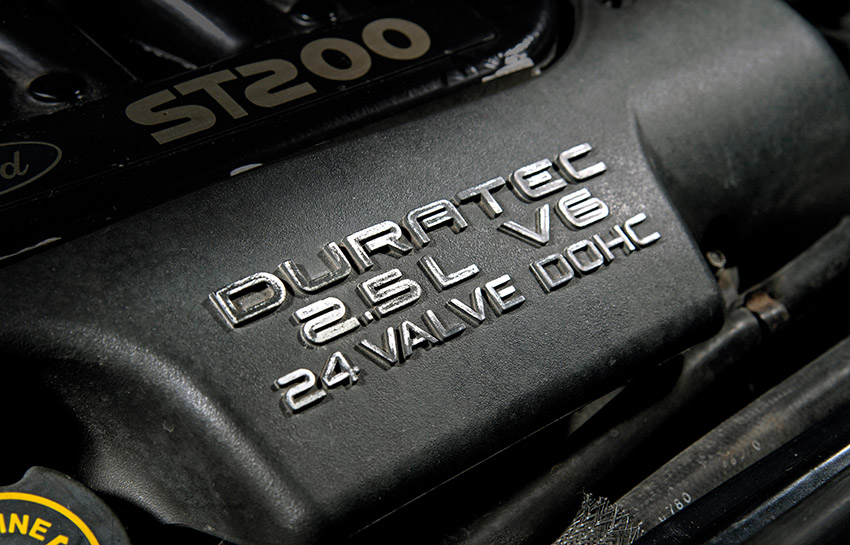
Why you want a Ford Mondeo ST200
- British Touring Car Championship racing was at its peak during the Mondeo’s reign, and the ST200 was the closest road-going relation to the ultra-cool Super Touring series.
- ST200s are an unfathomably cheap route into the Recaro seat of a retro fast Ford – and with such heritage, ever-increasing rarity and burbling V6 soundtrack, their prices are sure to rise within the next few years.
- Still enormously practical and usable everyday, a Mk2 Mondeo is a faithful companion with loads of standard kit and 140mph performance. What’s not to love?
Why you don’t…
- Gaffer-taped bumpers and minicabs are the old-Mondeo image, despite a classic-Ford status tantalisingly close to fruition.
- Rust can be the end of the road for a Mk2 Mondeo. If it’s rotted through the sills, inner arches and floors, it’s a substantial project – or, most likely, a scrapper.
- BTCC looks, maybe, but the ST200 isn’t quick by modern standards. And because it was well-tuned by Ford from the factory, aftermarket improvements aren’t easily achieved.
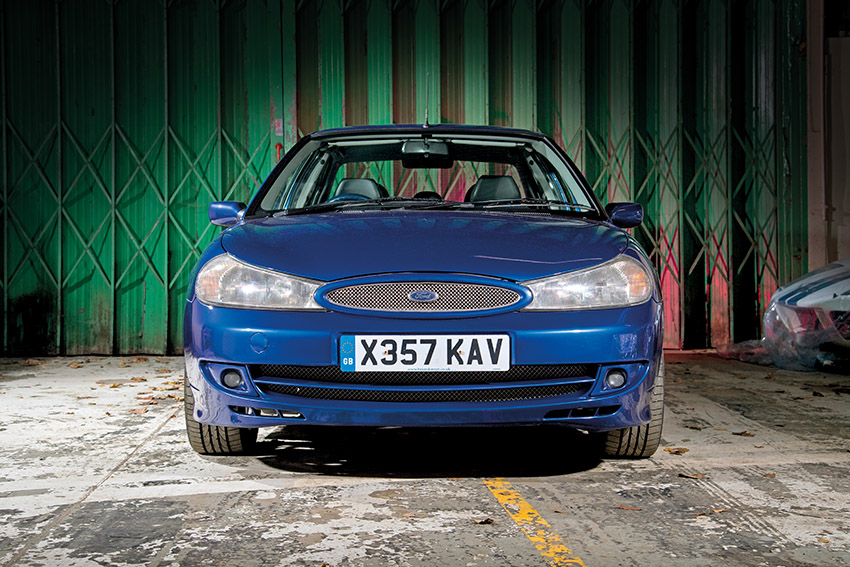
What to look out for on the Ford Mondeo ST200
Identity
Fast Fords have always been targeted by thieves and fraudsters, but the ST200 thankfully escaped most of the serious attention. Even so, you’ll need to invest in a thorough history check to ensure it’s not been stolen, written-off, scrapped or the subject of outstanding finance.
Check the chassis number on the logbook matches the sticker on the driver’s-side B-pillar, the stamps on the bulkhead (there’s a cutout in the insulation), and a plate on the nearside dashboard (visible through the windscreen from outside).
It’s also worth checking the car is a real Ford Mondeo ST200, as opposed to a tarted-up lesser model. By far the majority of British ST200s were Imperial Blue, and early examples (there were reportedly two press cars) were painted Imperial Blue on the inner wings, as opposed to primer. Diamond White, Panther Black, Stardust Silver and Radiant Red were also offered in mainland Europe.
The ST200 LE of July 2000 is particularly rare, having been sold in the UK as the only type of ST200 saloon; 201 were produced. The LE tends to be valued higher than the regular ST200 hatchback or estate (Germany and Belgium also got LE hatchbacks and estates). Ensure any LE has black-and-blue heated leather seats, blue steering wheel and dashboard inserts, plus a Limited Edition badge on the bootlid and numbered plaque on the ashtray (quoting a number out of 300, despite a 322 having been produced; it’s assumed the plaques were dealer-fitted, and not in numerical order).
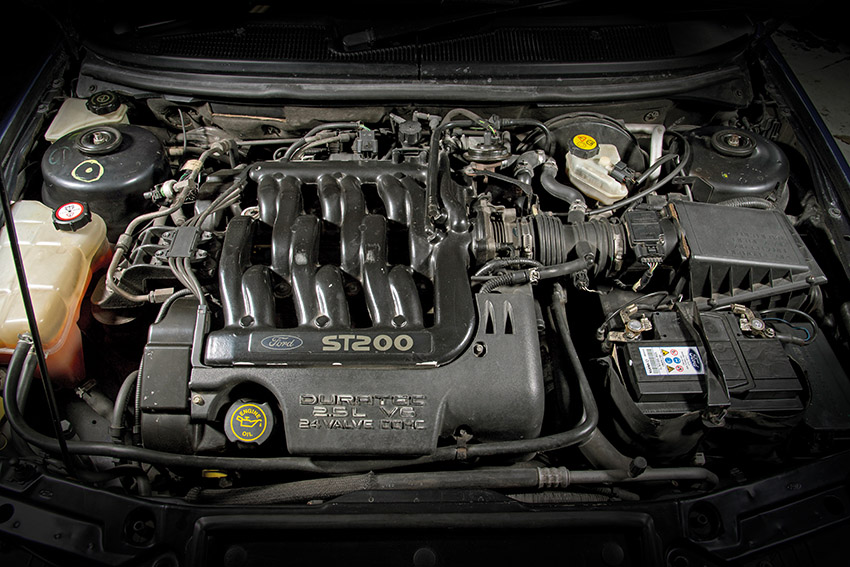
Engine
ST200s were known for being well-tuned by Ford in Germany – taking the ST24’s 168bhp 2544cc Duratec V6 to 201bhp thanks to polished cylinder heads, sportier cams, honed inlet manifolds, beefier throttle body and dual-inlet airbox. Although that means it’s tricky to enhance power output, it thankfully doesn’t result in an overly-stressed engine.
The early Duratec V6 had a reputation for head gasket failure, but that’s rare on an ST200. Even so, check for symptoms: mayonnaise on the dipstick and steam from the exhaust would be unusual – a blow to atmosphere from near cylinder one on the front bank would be more likely. Failure would sound like a blowing exhaust manifold, which is fortunately the most likely cause – leaking from a gasket or sheered bolt; listen for the ticking getting louder as you increase the engine revs.
Blowing from the EGR system can cause ticking too, so EGR deletion works well. Misfiring could also result from head gasket failure, but the most likely culprits are the coil pack, plugs or leads.
Poor performance is common, often due to a knackered IMRC (inlet manifold runner control), which opens the secondary inlet butterflies at 3500-to-4000rpm, giving a surge of power under full throttle. The IMRC lives above the exhaust manifold; a transistor on its circuit board overheats and fails, causing sluggish acceleration at higher revs. It can be replaced, repaired (you’ll need expert soldering skills) or bypassed altogether to keep the secondary inlets permanently open, with mixed results. If you’re lucky, you may find the secondaries are just dirty, so a quick clean-up could be the cure.
Duratec V6s tend to burn a little oil, so letting it run low could be catastrophic – destroying the crankshaft bearings, resulting in heavy knocking and the need for a rebuild. Neglecting oil changes can cause camshaft wear: listen for tapping from the top of the engine, especially from cold. Clattering could point to a tired timing chain tensioner; they’ve been known to wear out from as early as 60,000 miles, but repairs are expensive. Some ST200 owners have sourced timing chain kits from Japan or America to save money.
Slow-sounding starter motors are common, albeit not overly expensive. Alternator faults can be frequent but awkward to change, thanks to being at the back of the engine beneath the rear exhaust manifold. A duff alternator can lead to several other issues, so make sure the alternator light (battery symbol) comes on with the ignition, goes off when the engine is started and doesn’t flicker under high revs.
Fuel pump failure is problematic, causing the car not to start; listen for buzzing underneath. OE replacements are costly, but non-genuine pumps are available to save cash.
Allow the engine to get warm, and ensure the cooling fans cut in. They sometimes seize altogether, leading to eventual meltdown.
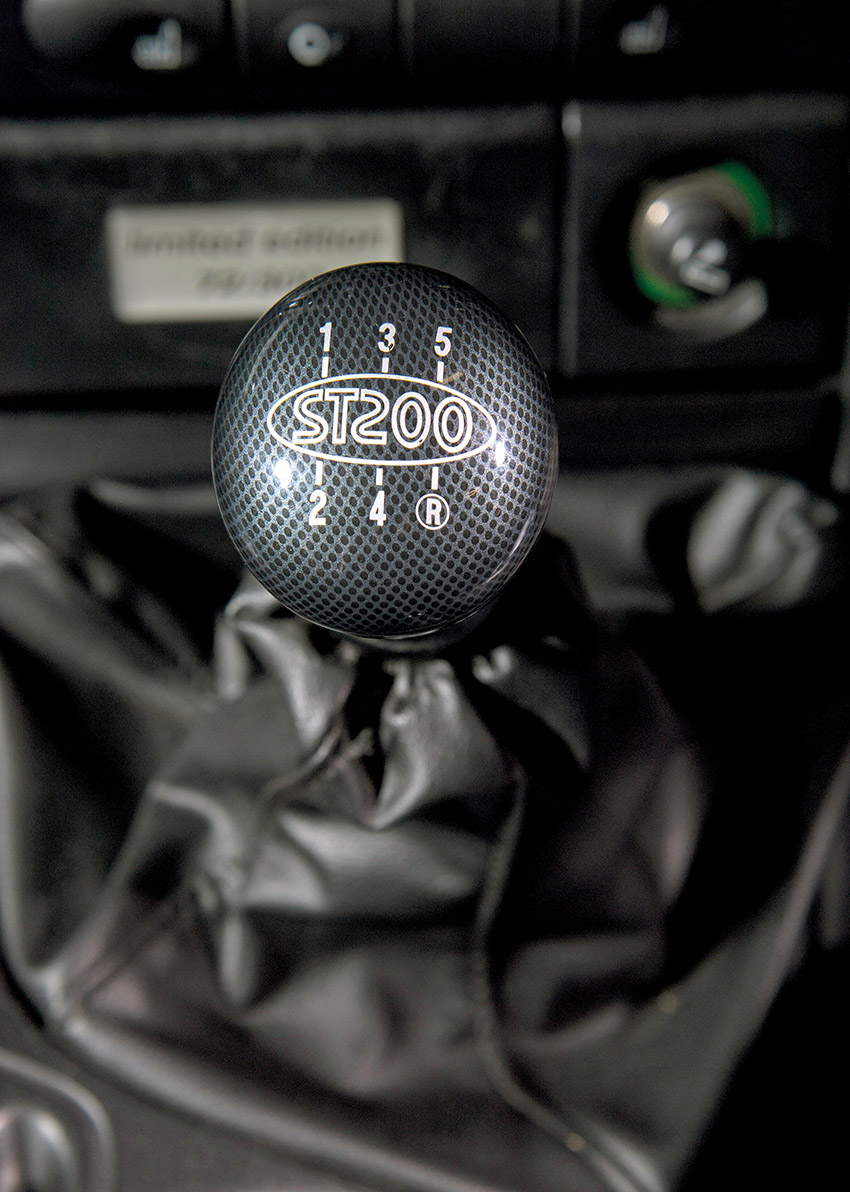
Transmission
Ford’s MTX-75 five-speed manual gearbox is known for being tough; in the ST200 it gained revised gear ratios, a lighter flywheel and uprated clutch. It’s unlikely to cause any bother.
That said, a few high-mileage ‘boxes have had differential problems, and a gearbox oil change at 100,000 miles has been mooted as beneficial. On the flip side, it’s an opportunity to invest in a limited-slip differential. Listen for whining from the transmission – the telltale groan sounds similar to worn driveshafts but will generally be accompanied by torque steer when driving in a straight line.
Check for rumbling or rattling from the gearbox (suggesting worn bearings), and be wary of gear selection problems, especially on third – which points to knackered synchromesh and the need for a replacement ‘box. It’s especially likely if the Mondeo has minicab-rivalling mileage.
You’re more likely to experience clutch trouble, even on a lesser-used ST200. Take a test drive and ensure the pedal feels light; if it’s heavy, the springs or pressure plate are on their last legs; if the biting point is high or gears are tricky to select, it’s ready for replacement. Clutch slip will be evident if you drive in fourth gear at 2000rpm and floor the throttle; if the engine revs increase but the road speed doesn’t, expect to spend heavily on getting the clutch renewed.
Worry less about clicking on full steering lock, which will be due to tired CV joints; they’re not pricey to replace, but are best swapped sooner than later.
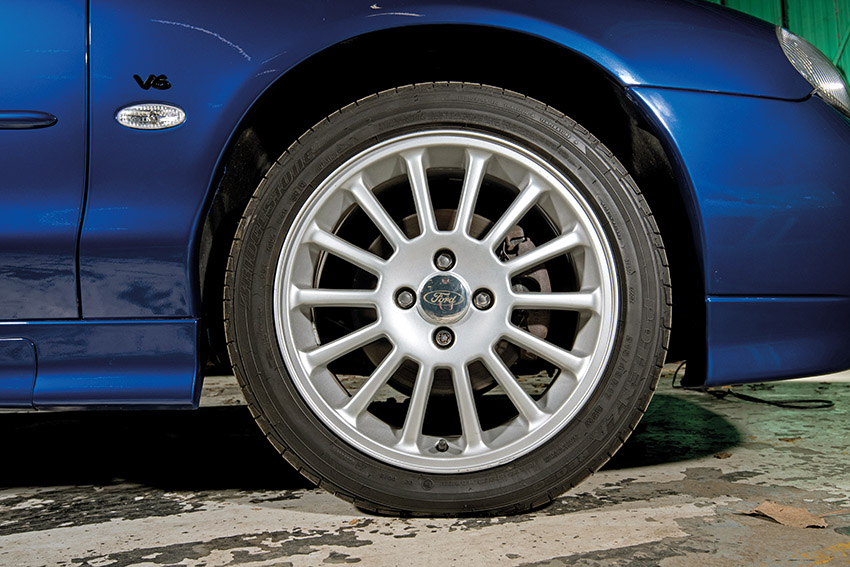
Suspension & Brakes
You may be surprised by how nicely a Ford Mondeo ST200 drives. The stock setup included lowered springs and stiffer dampers, resulting in a firm and sporty ride (reckoned to be too firm by some testers), not to mention great poise on the twisty bits.
The problem is ST200s were fitted with bespoke suspension components, including unique front suspension arms; like normal Mk2 Mondeos, they regularly destroy front wishbone bushes, resulting in wandering at speed and clonking over bumps; unlike normal Mondeos, the replacement parts are rare and expensive. The ball joints can be replaced separately, but owners tend to get the main subframe bushes from America by buying Ford Contour components.
Broken anti-roll bar drop links also cause knocking noises, as do snapped coil springs or even faulty dampers. Beware, because the springs and shock absorbers are ST200-specific, and OEM dampers are particularly difficult to source.
Likewise, banging at the back may result from fractured springs or defective drop links; saloons and hatchbacks are also susceptible to broken rear subframe bushes, which make the rear end feel soggy. Upgrading to polyurethane solves the problem. Estates have their own issues because their self-levelling rear dampers are ultra-pricey; ST220 (Mk3) versions will suffice instead.
Like all Mondeos, the ST200 is sensitive to wheel geometry settings (leading to wandering) and worn wheel bearings at high mileages; listen for rumbling, and jack up each corner of the car to wiggle the wheels and feel for excessive play.
ST200 brakes were sub-standard from new (basic Mondeo callipers with 278mm discs), so expect them to feel poor by modern levels. Juddering from the pedal is common (typically due to warped/contaminated discs/pads), while sponginess is mainly caused by air in the system – perhaps from the fluid having overheated. Basic servicing should fix the faults, using the best pads you can afford.
Heavy juddering and pulling to one side during braking probably stem from a seized front calliper (if not an aforementioned wishbone bush). Rear callipers are particularly prone to sticking, often with the handbrake failing to function; jack up the car and spin the wheels to check.
Ensure the ABS system works properly: the warning light should glow when you turn on the ignition, and go out again after starting the engine. If it stays alight, it’s usually due to a dodgy (dirty or failed) sensor, but it could also be caused by the ABS pump or module.
Many ST200 owners have by now added upgraded front brakes, which are a bonus when buying. Mk1 Mondeo V6 callipers, ST170 discs with Mk3 callipers, or Focus ST225 callipers with redrilled discs (from five- to four-stud) are all tried-and-tested solutions.
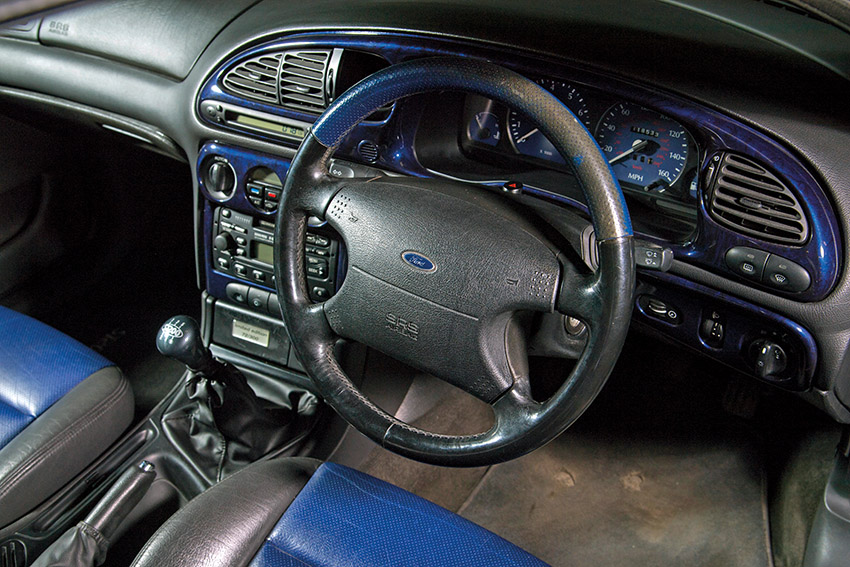
Interior
Mk2 Mondeo cabins are hard-wearing, so even a high-mileage example shouldn’t look scruffy; if it is, suspect it’s hard a hard life – perhaps used years ago as a minicab or even police car (especially if it’s one of the rare white-painted ST200s), which left the factory with cloth seats. That said, a few rattles and creaks can be expected in a Ford of this age.
Tatty trim, scuffed seats, damaged door cards or a drilled dashboard can be replaced fairly easily, unless it’s a Ford Mondeo ST200 Limited Edition with mottled blue fascia panels. All regular ST200s were equipped with carbon-look interior panels and door pulls, plus a perforated-leather steering wheel, blue dials with ST200 logo, carbon-effect ST200-badged gearknob, six-disc CD changer, climate control, all-round electric windows, trip computer, ST200 kick plates and now-rare floor mats. Start asking questions if any pieces are missing from your potential purchase.
Electric window and central locking motors are regular causes for complaint when their motors stop working. The parts are shared with basic Mondeos, so don’t tend to be dear, although second-hand parts are becoming harder to find.
Make sure the heater blower activates on all settings (a common Mondeo fault), and check the air conditioning blows cold. Ensure the dashboard isn’t displaying warning lights, especially lamps for the ABS (typically due to a sensor fault) or airbag (often caused by a poor connection in the loom under the front seat). Be especially wary of a battery warning light, which could suggest alternator failure or a tired battery. Flickering or pulsing headlamps may also be evident, but could be related to an alternator wire, which was a cheap and simple repair covered under a Ford technical service bulletin.
Early ST200s included Recaro front seats with half-leather upholstery, or full-leather as an optional extra. From summer 1999, full leather was standard. Worn bolsters, cracked leather and broken bases are quite normal by now, and the electric motor mechanisms tend to stop working due to stripped gears; several ST200s have been retrofitted with pre-2003 Mondeo ST220 seats, which look similar and have a more reliable motor assembly.
Lift the mats in both front footwells to feel for dampness; if water has been leaking through the bulkhead or pollen filter, the carpets may be mouldy and the floorpan rotten.
Boot floors of saloons and hatchbacks corrode due to leaks from the rear light seals, so check beneath the mats and spare wheel. Be sure to look under the rear seat bolsters for rotten seat belt mounts.
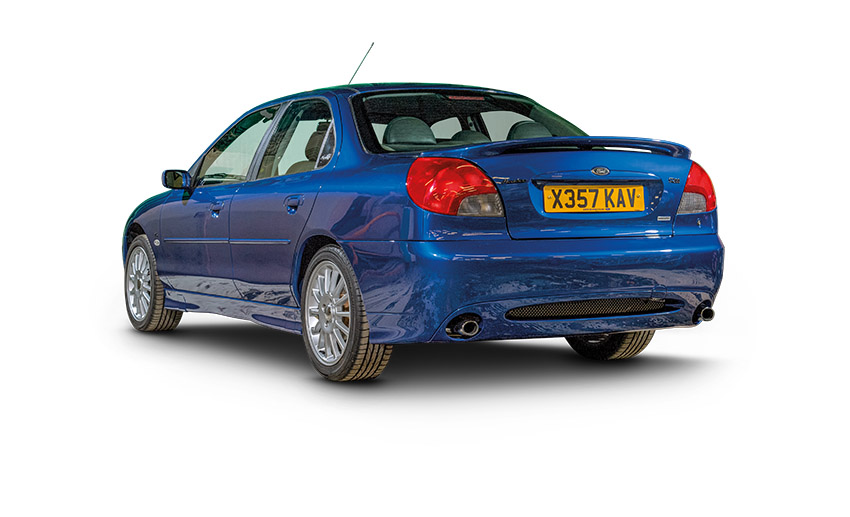
Exterior
Corrosion is the number one killer of ST200s, and many of today’s survivors are exhibiting rot. Typically, if a Mondeo is rusty, the tinworm will be extensive – and often prohibitively expensive to repair if it’s really taken hold.
Rusty rear wheelarches will be obvious, but check inside the inner arch (extending to the rear seat belt mounts), all the way down to the sills, and behind the side skirts. Feel behind the skirts as far as you can reach, pressing on the inner sills. Corrosion could have spread to the floorpan, so examine the underside, including chassis rails and boot floor. Remove the wheels and inspect the inner arches behind the arch liners.
Repairs here will be expensive, but if it’s been done correctly – chopping out all the rot and adding cavity wax protection – there’s no need to be alarmed.
Look around the fuel filler flap and examine all the doors, paying attention to their frames and the weather strips alongside the windows; when rusty they tend to scratch the glass, so budget for a set of new seals. Some Mk2s have rotted quite severely around the windscreen rubbers too.
The bonnet may be corroded – generally due to stone chips – and the fog lamps need checking to ensure they’re not cracked. Of course, the ST200 is a Mk2 Mondeo, so its bumpers are naturally inclined to crack or fall apart; gaffer-taped bumpers were traditional for Mondeo owners, yet the ST200’s RSAP bodykit (shared with the ST24, among others) is relatively easy to find second-hand – except for the twin-exhaust back bumper. For hatchbacks and saloons they’re rare, but ST200 estate rear bumpers are almost impossible to find – resulting in the car potentially being written-off by the insurer if it gets damaged.
Bear in mind any severely crispy ST200 could be fit for scrap, so it’s preferable to find a better car than indulge in a lengthy restoration.
Tread carefully around any ST200 that doesn’t sport Imperial Blue bodywork. A few were built in other colours, and 66 UK police cars were Diamond White – rare, yes, but often subjected to a hard life.
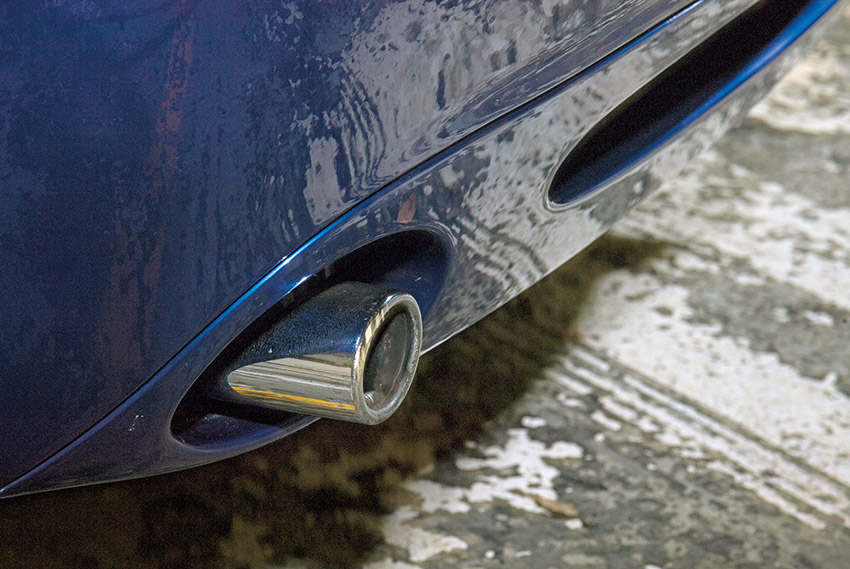
Ford Mondeo ST200 prices
Project: £500 to £1500 – Typically offered for ‘spares or repairs’, a cheap ST200 will be rusty – perhaps hopelessly rotten – and in need of major repairs. Rebuilding a scrapper to roadworthy condition won’t be cost-effective, and a full restoration would set you back far more than it’s worth.
Good: £1500 to £4000 – Mechanically-sound ST200s start here, hopefully with fewer than 150,000 recorded miles. At the lower end, they may need a little welding on the sills or wheelarches, but higher-priced cars should be fit for faithful service. Pay extra for a saloon.
concours: £4000 to £8000-plus – Rust-free ST200s are worth the extra cash, but beware of overpriced cars with optimistic (or cynical) dealers. Genuine very-low-mileage examples can double this value, but always take a long time to find a buyer.
Tech Spec: Ford Mondeo ST200
Engine:
2544cc, 24V, V6 Duratec VE with 10.3:1 (ST200) compression ratio, chain-driven quad cams, dual-phase induction system, Ford EEC-V management, extrude-honed primary and secondary cylinder head intake ports, reprofiled hollow inlet and exhaust camshafts, extrude-honed upper and lower intake manifolds, enlarged throttle body, dual-inlet air cleaner, Bosch green injectors, revised ECU software mapping and increased-diameter twin-tailpipe exhaust system
Transmission:
MTX75 five-speed manual, lightened flywheel, uprated clutch, revised gear ratios, traction control
Suspension:
Front: MacPherson struts with uprated springs and dampers, lower A-arms, anti-roll bar, front subframe and wishbones; rear: Quadralink with independent struts (saloon/hatch), trailing arms (estate), revised springs, dampers, anti-roll bar
Brakes:
Front: 278mm ventilated discs; rear: 253mm solid discs; ABS
Wheels & Tyres:
7x17in multi-spoke alloy wheels with 215/45×17 tyres
Exterior:
Mondeo four-door saloon/five-door hatchback/five-door estate with Si rear boot/tailgate spoiler, mesh front grille, RSAP bodykit comprising side skirts, front and rear bumpers, twin-exhaust outlets in rear bumper, heated windscreen
Interior:
Half-leather Recaro front seats (full leather from summer 1999), perforated-leather steering wheel, dark blue instrument cluster, carbon-look interior panels, door pulls and gearknob, ST200 kick plates and mats

